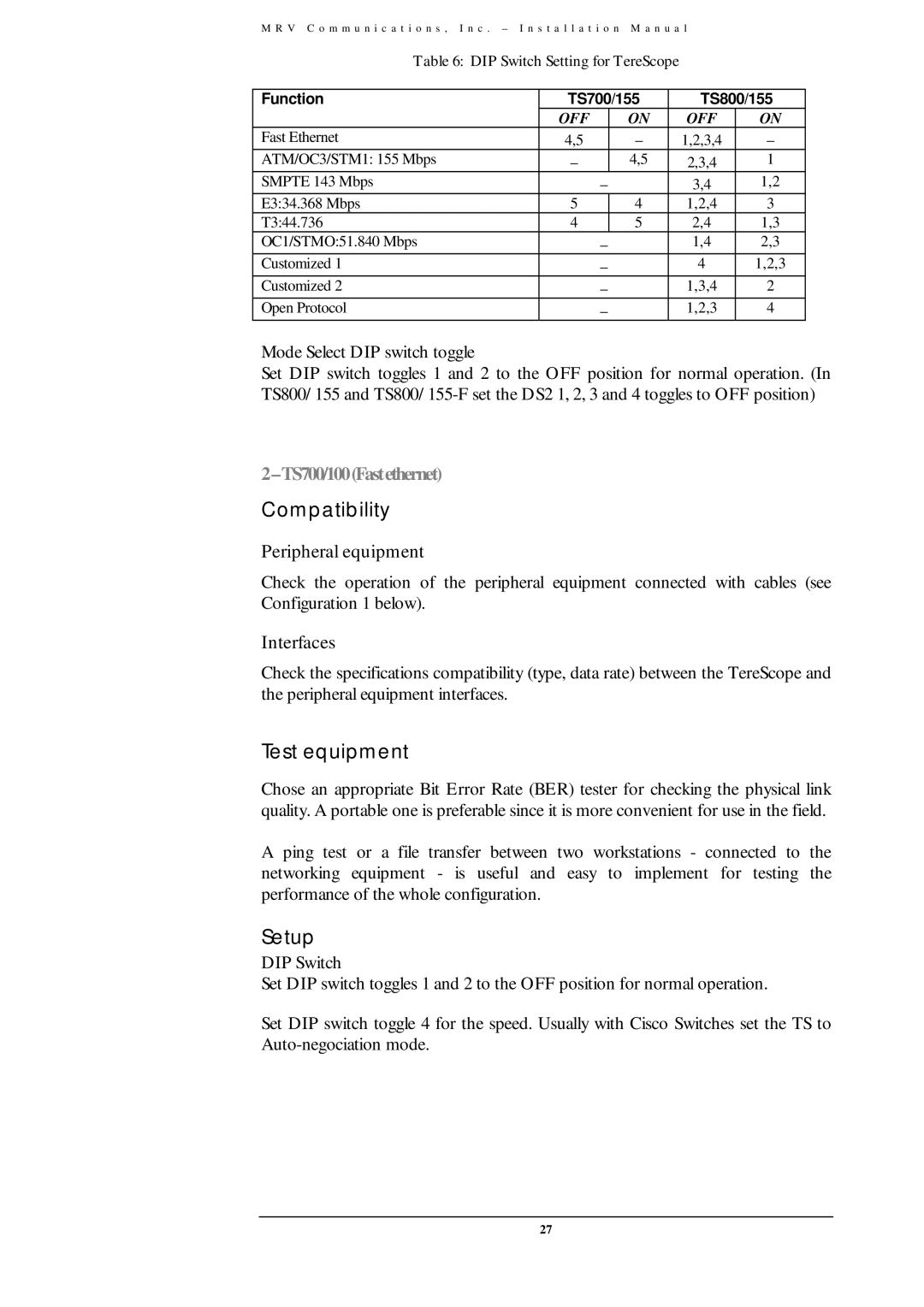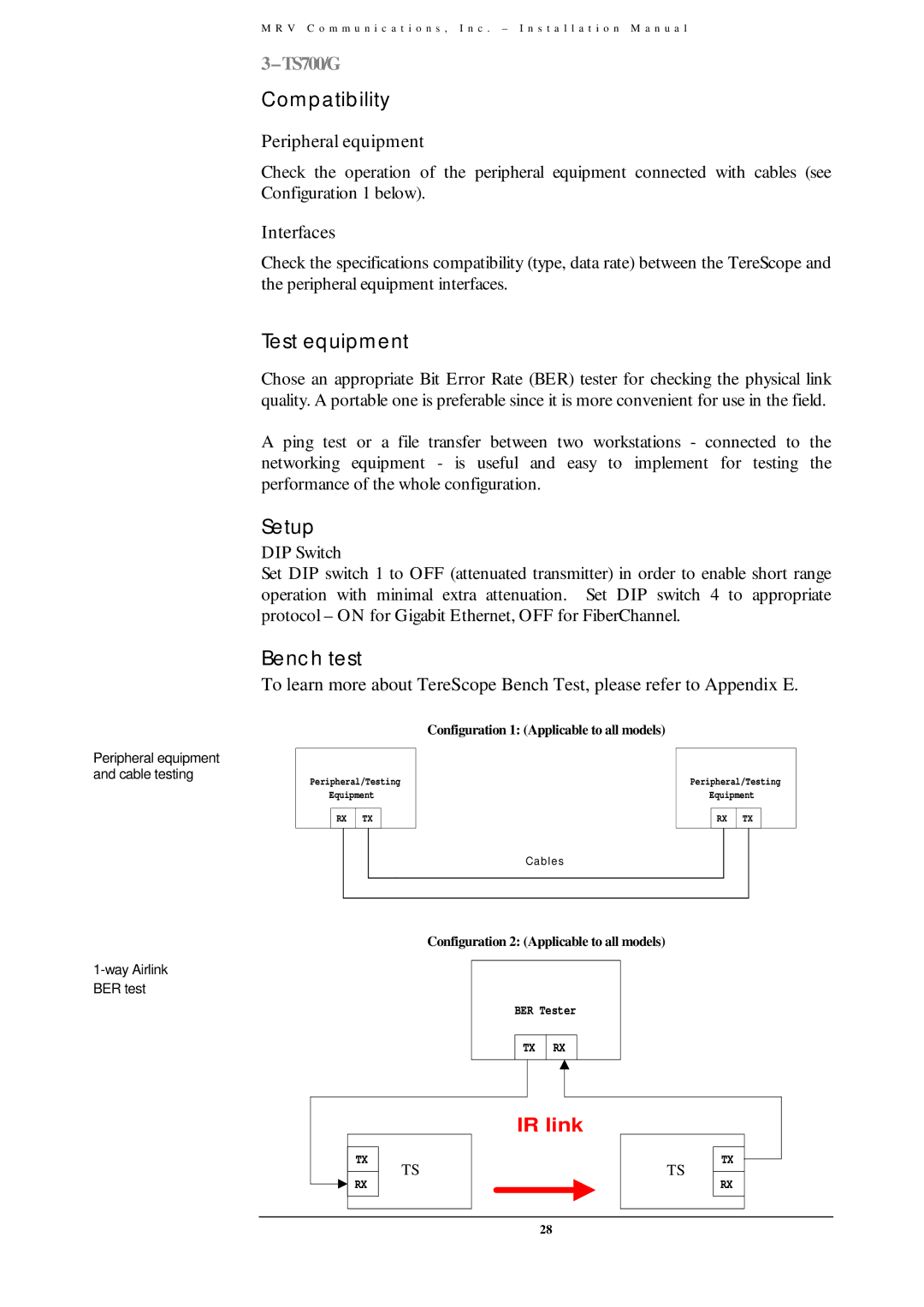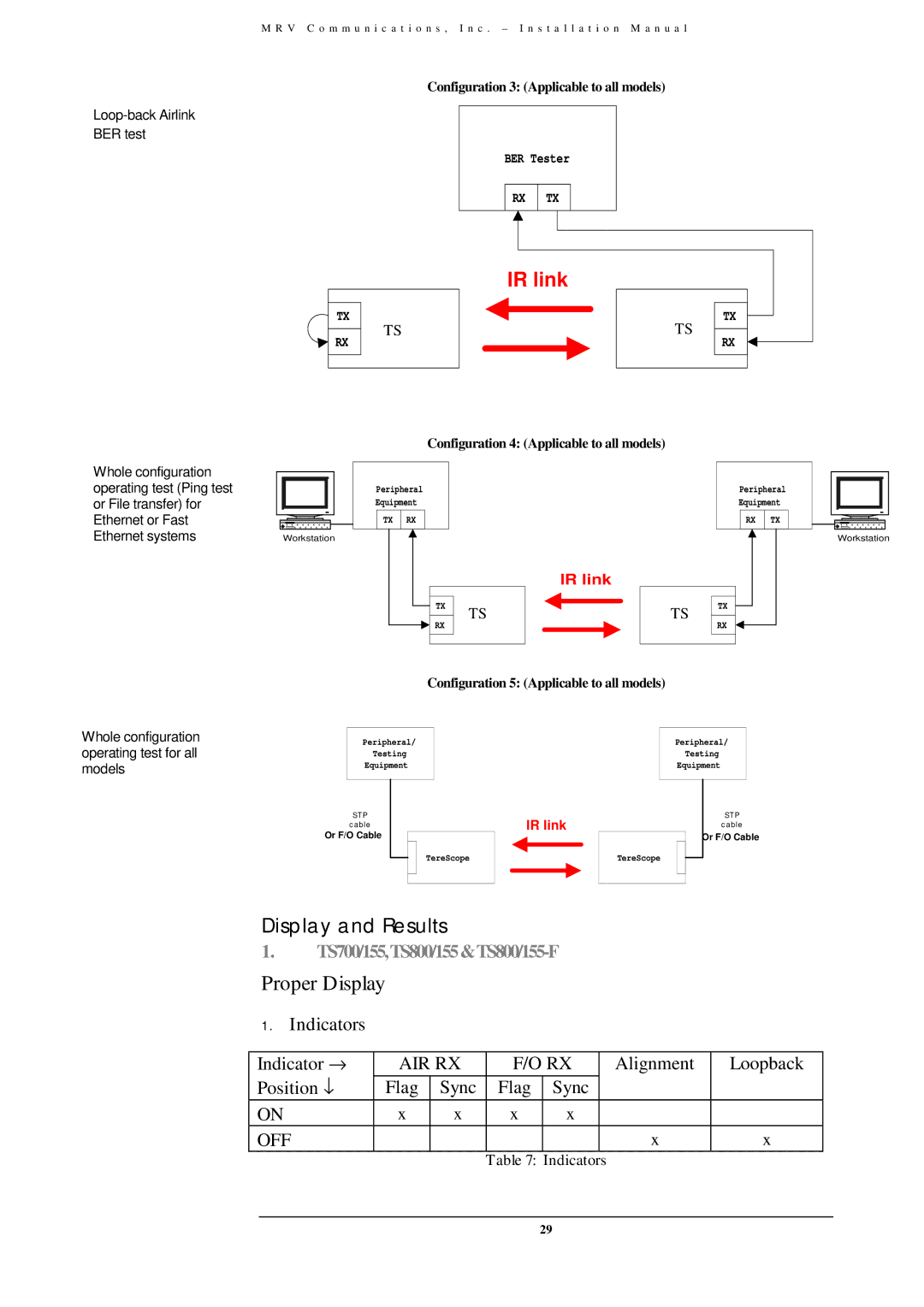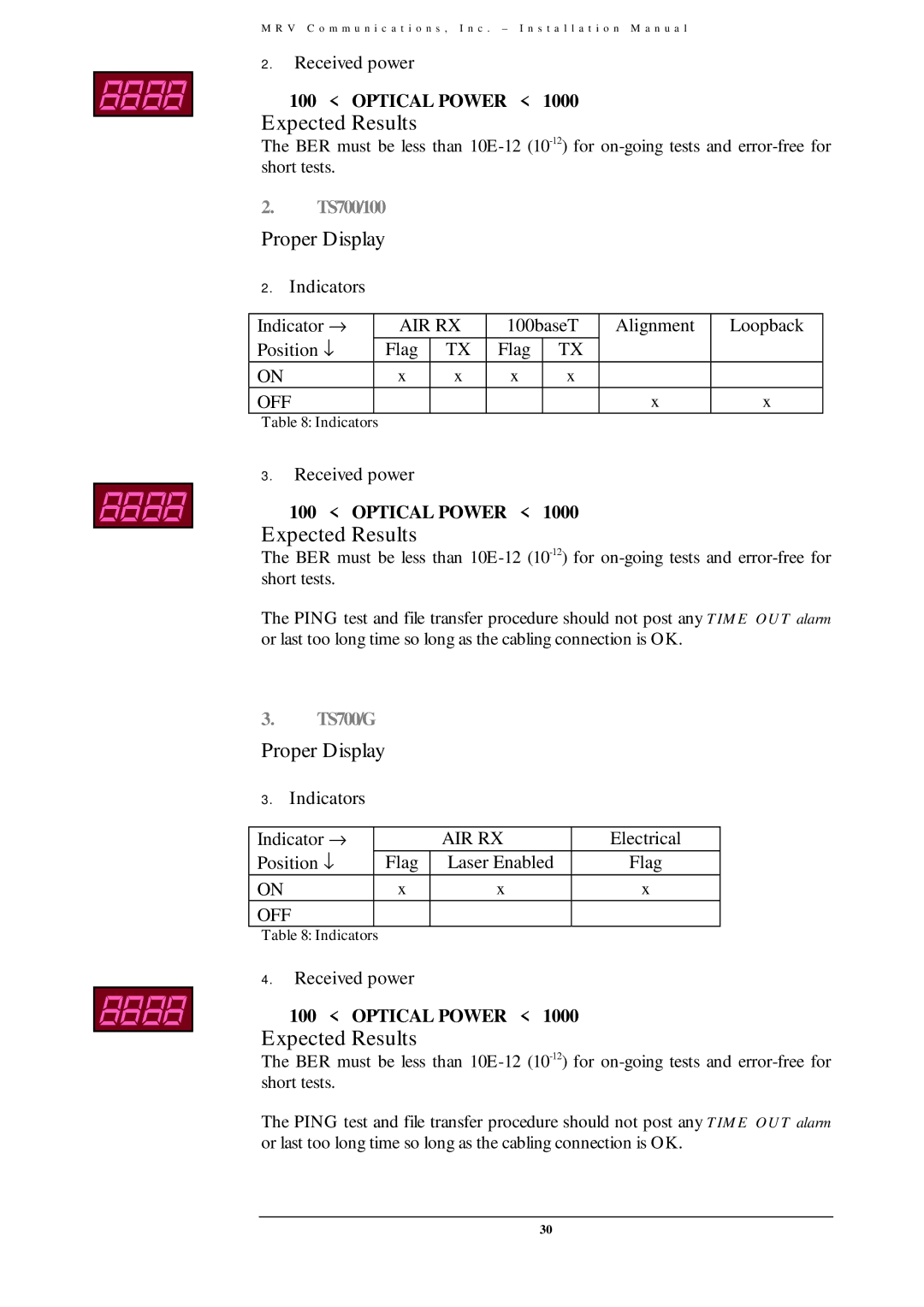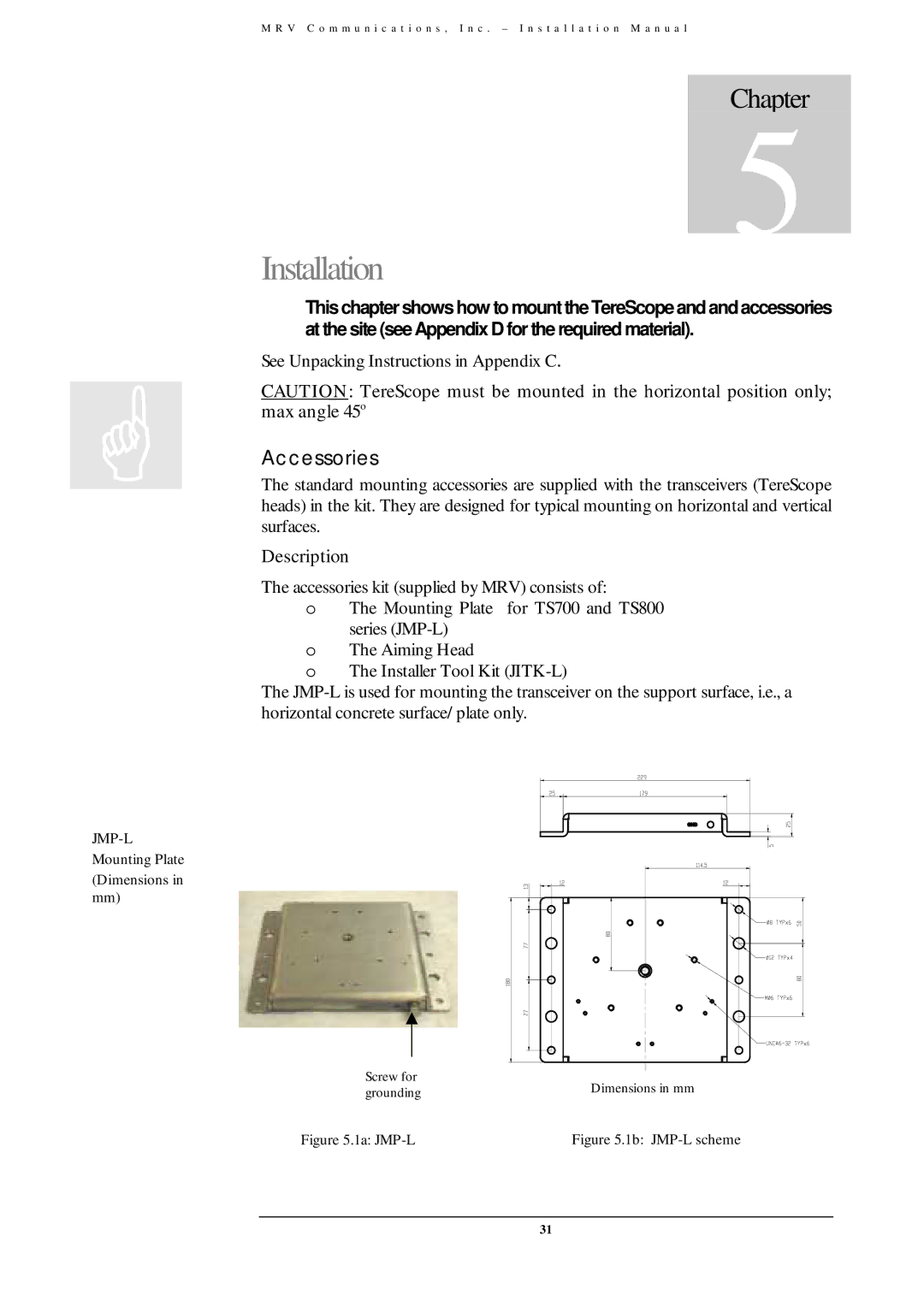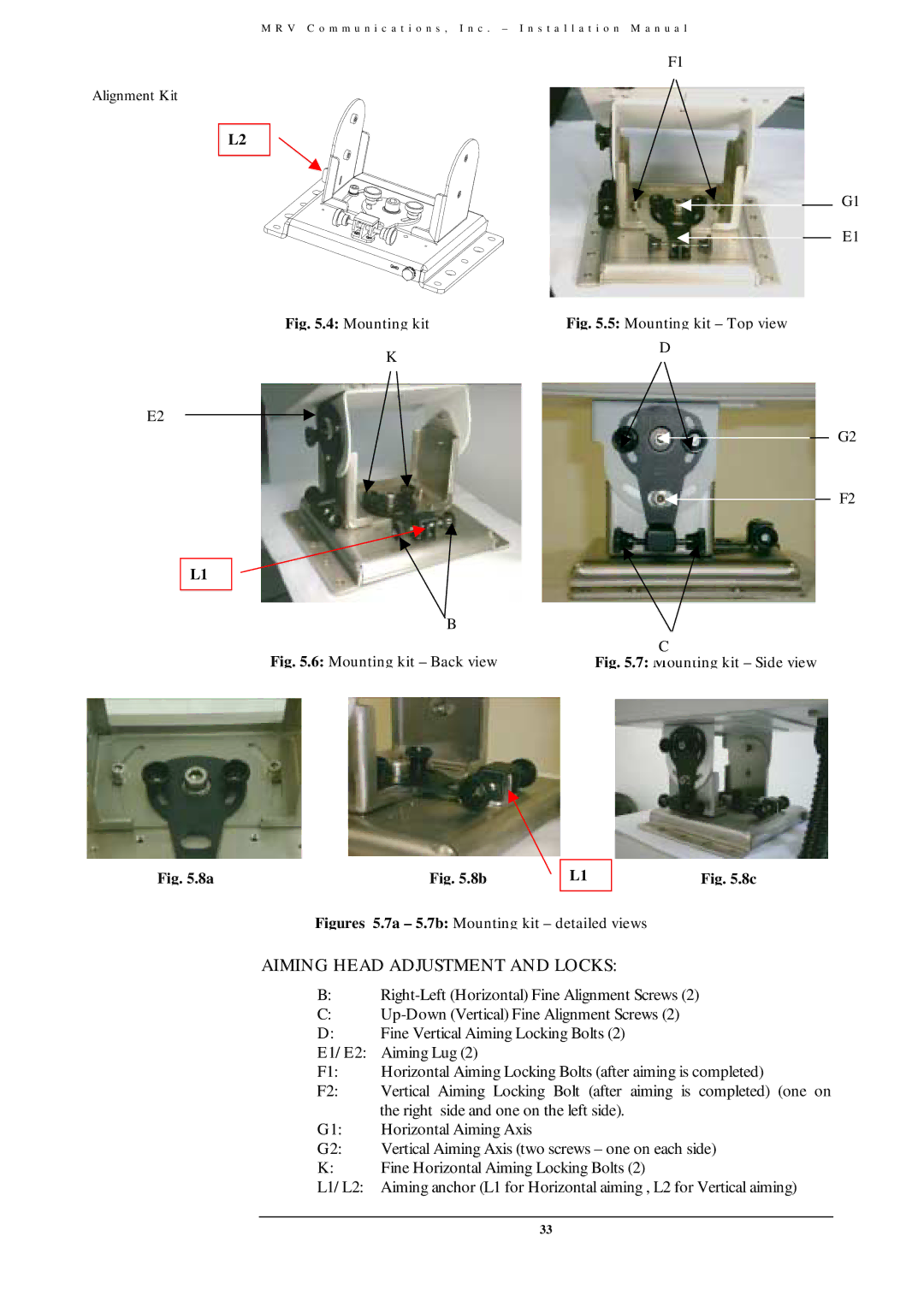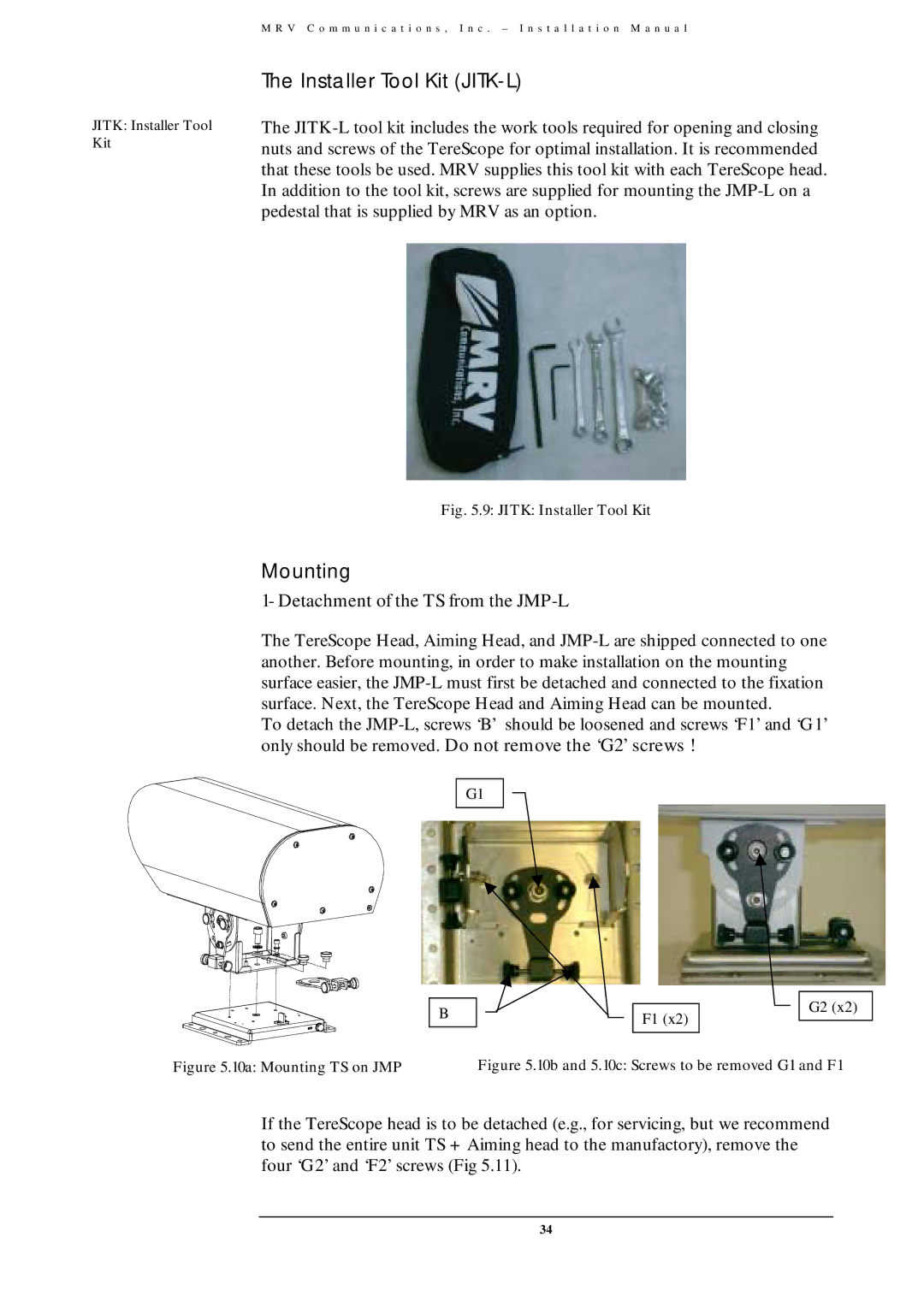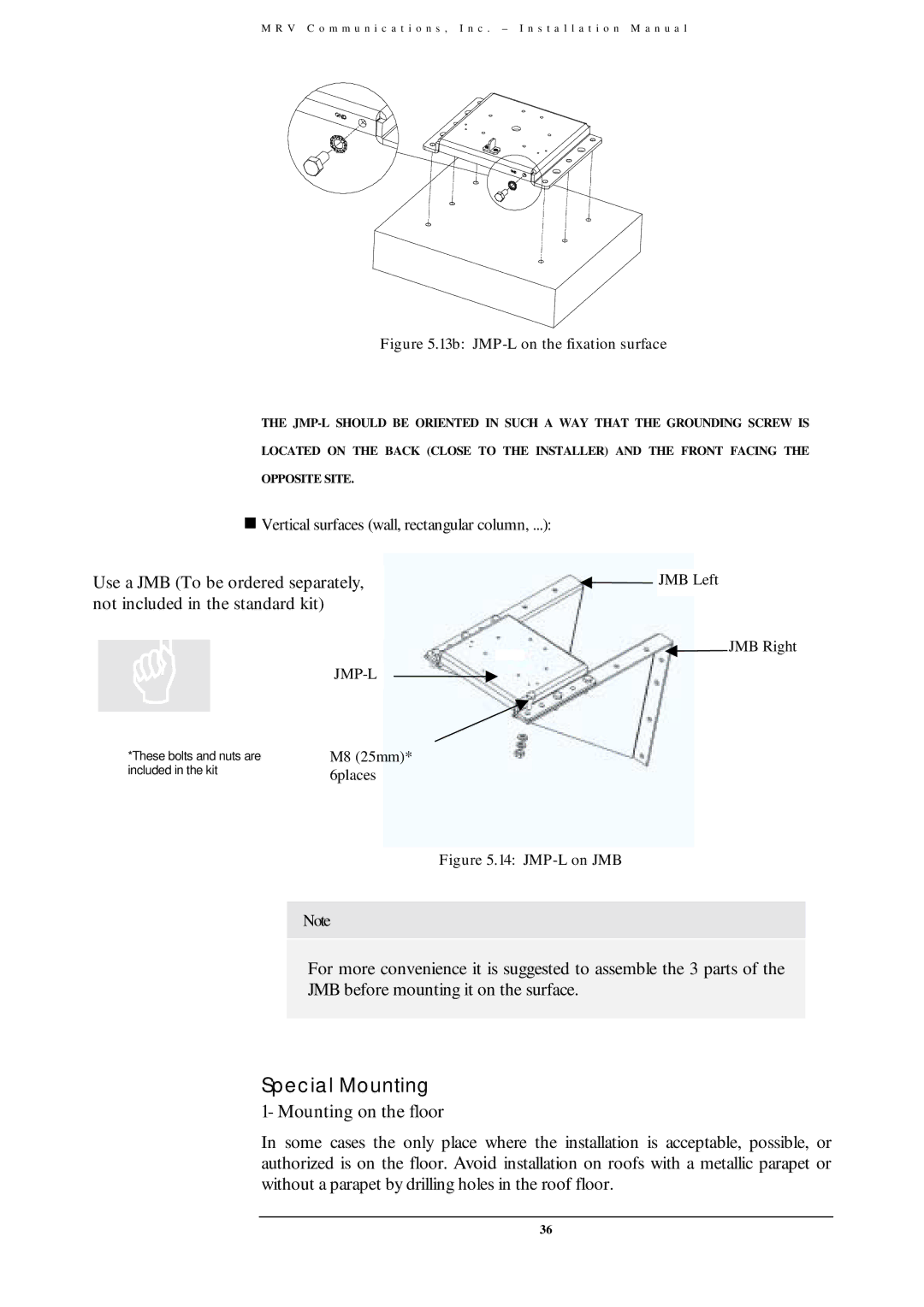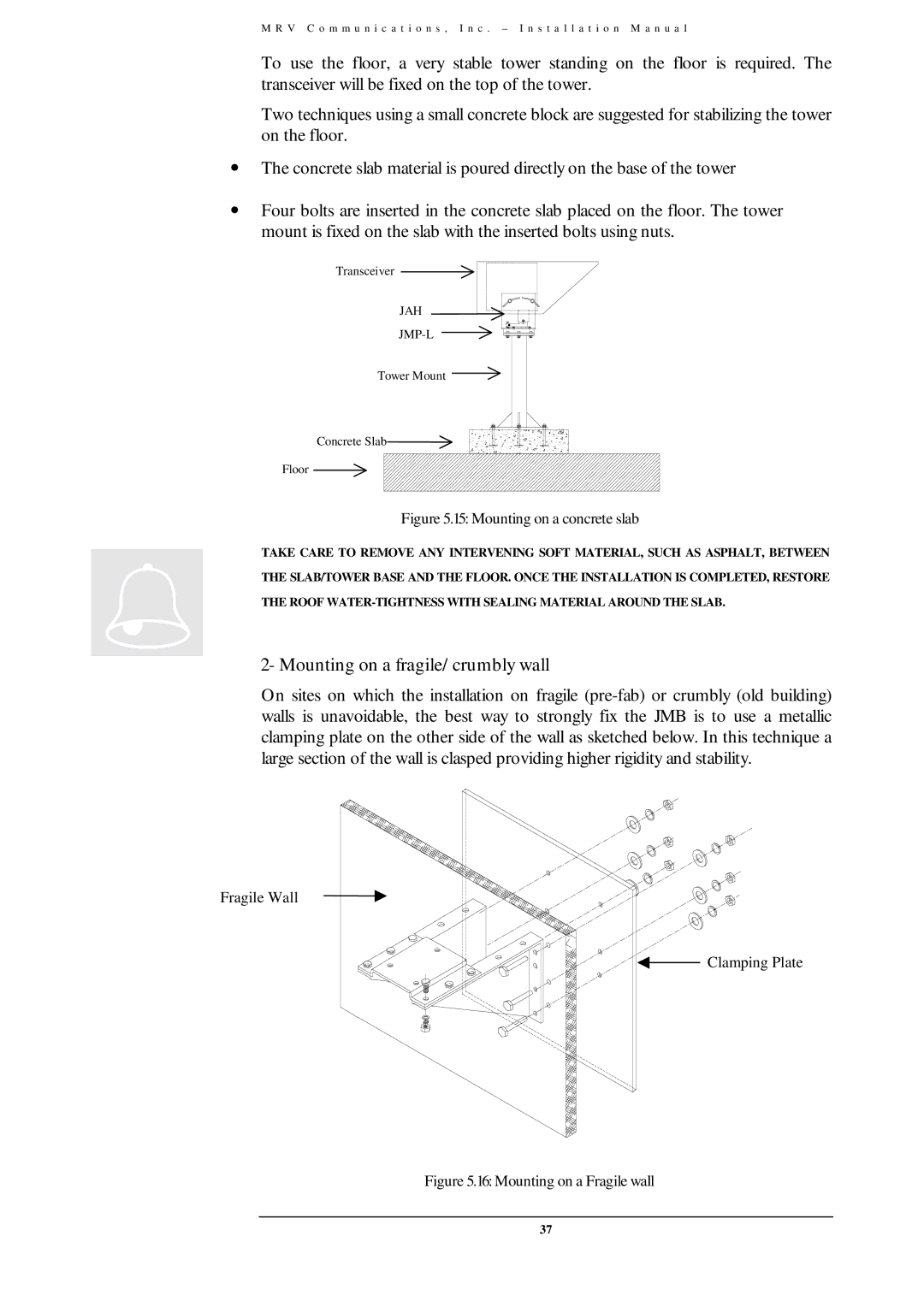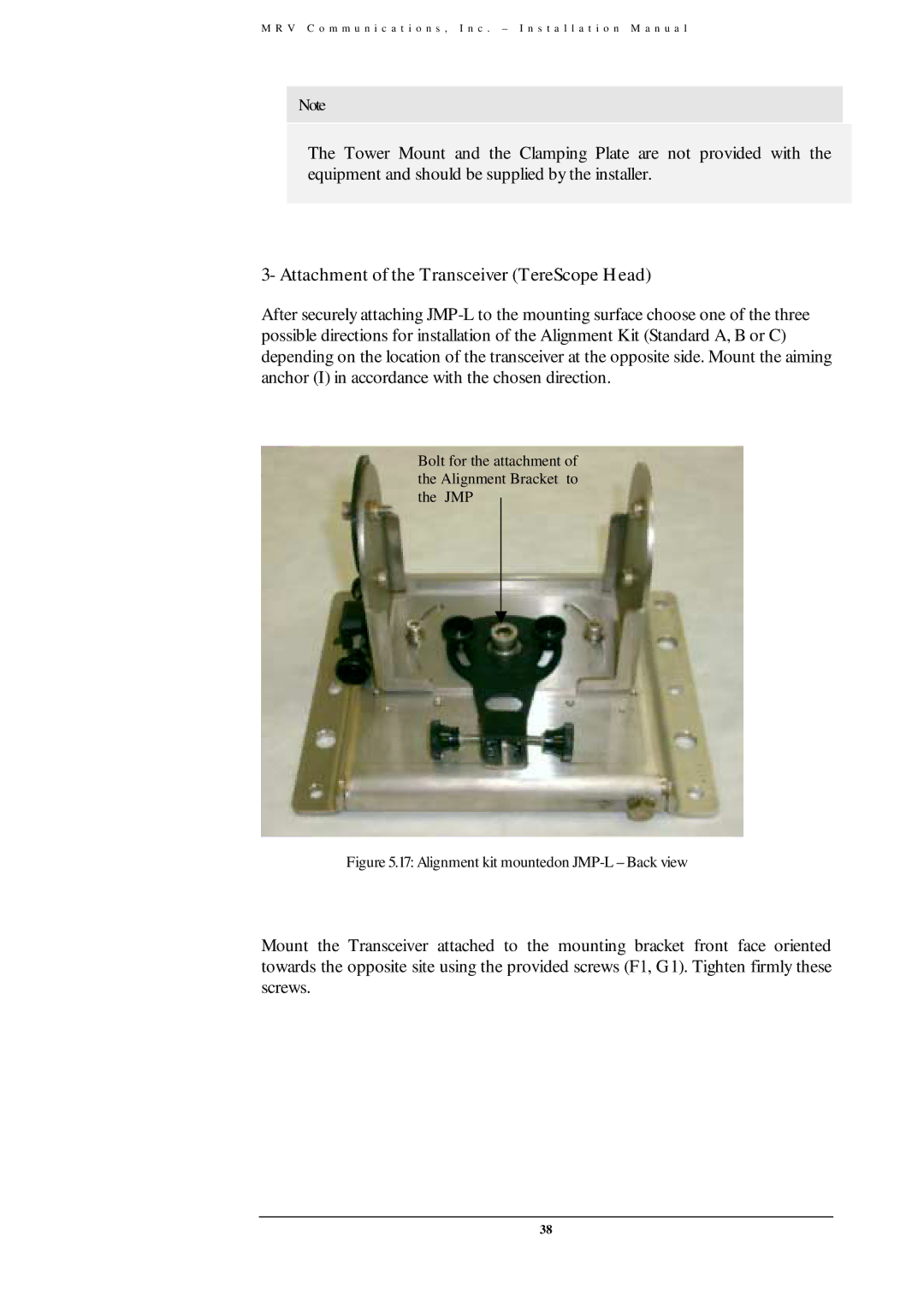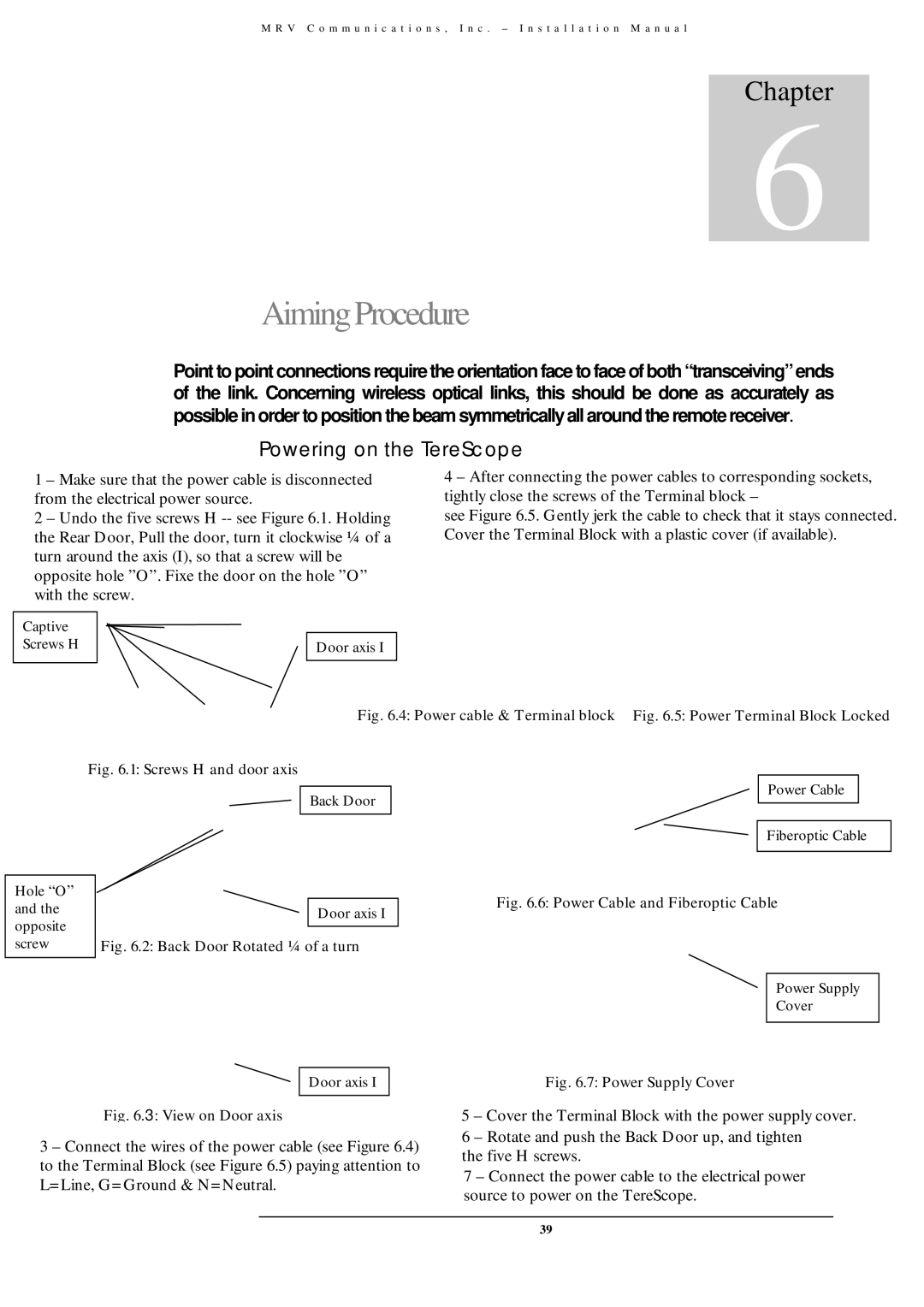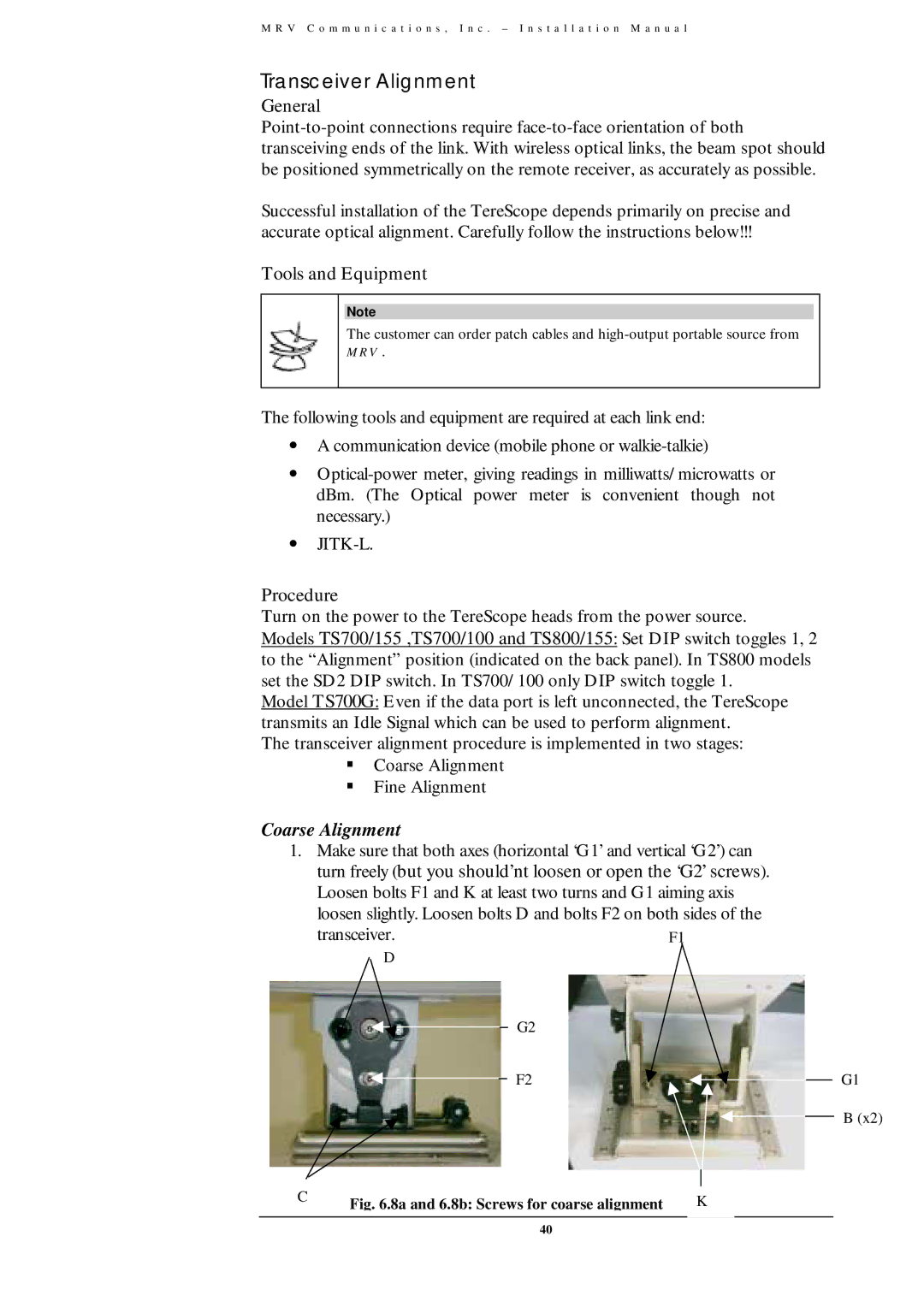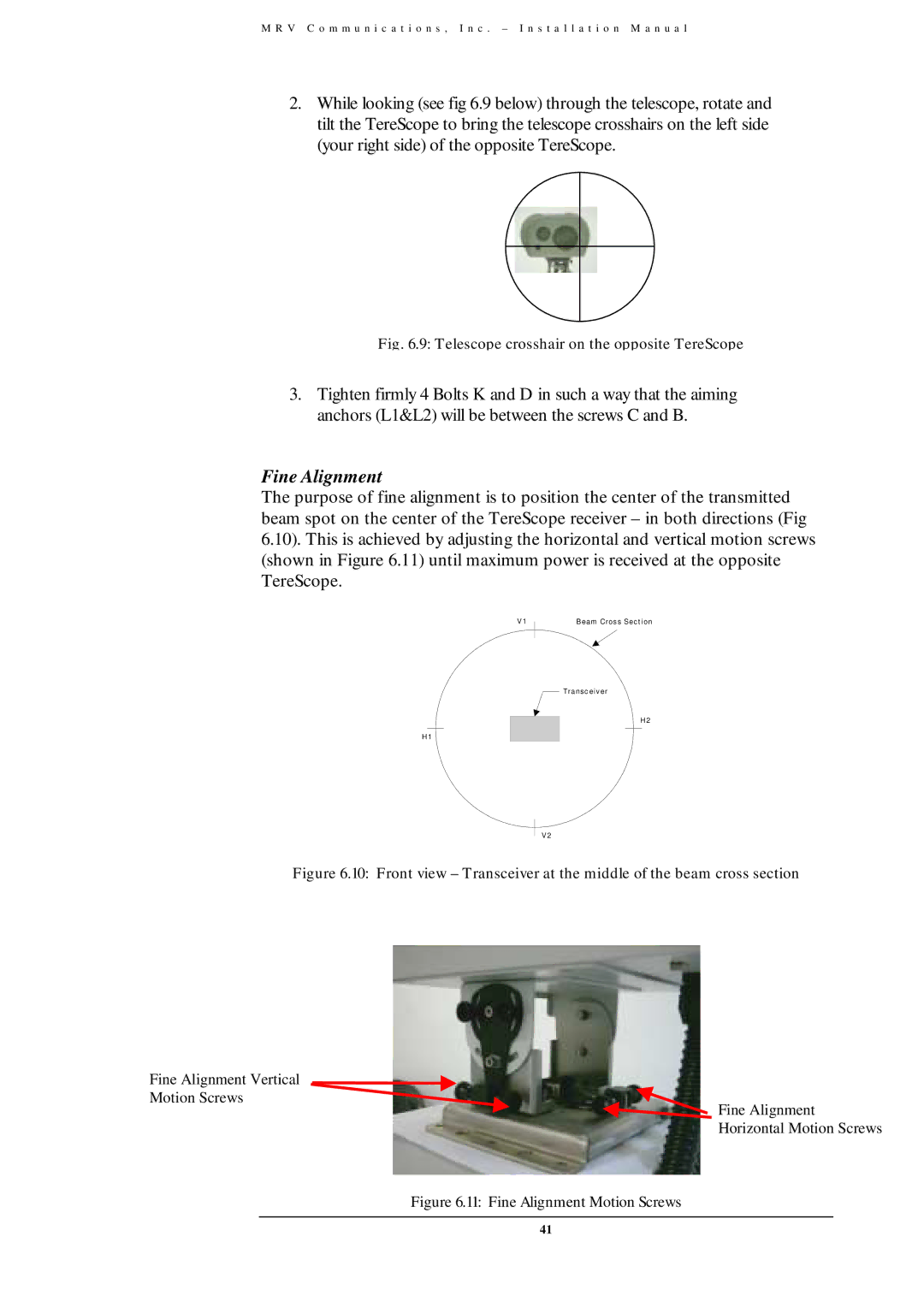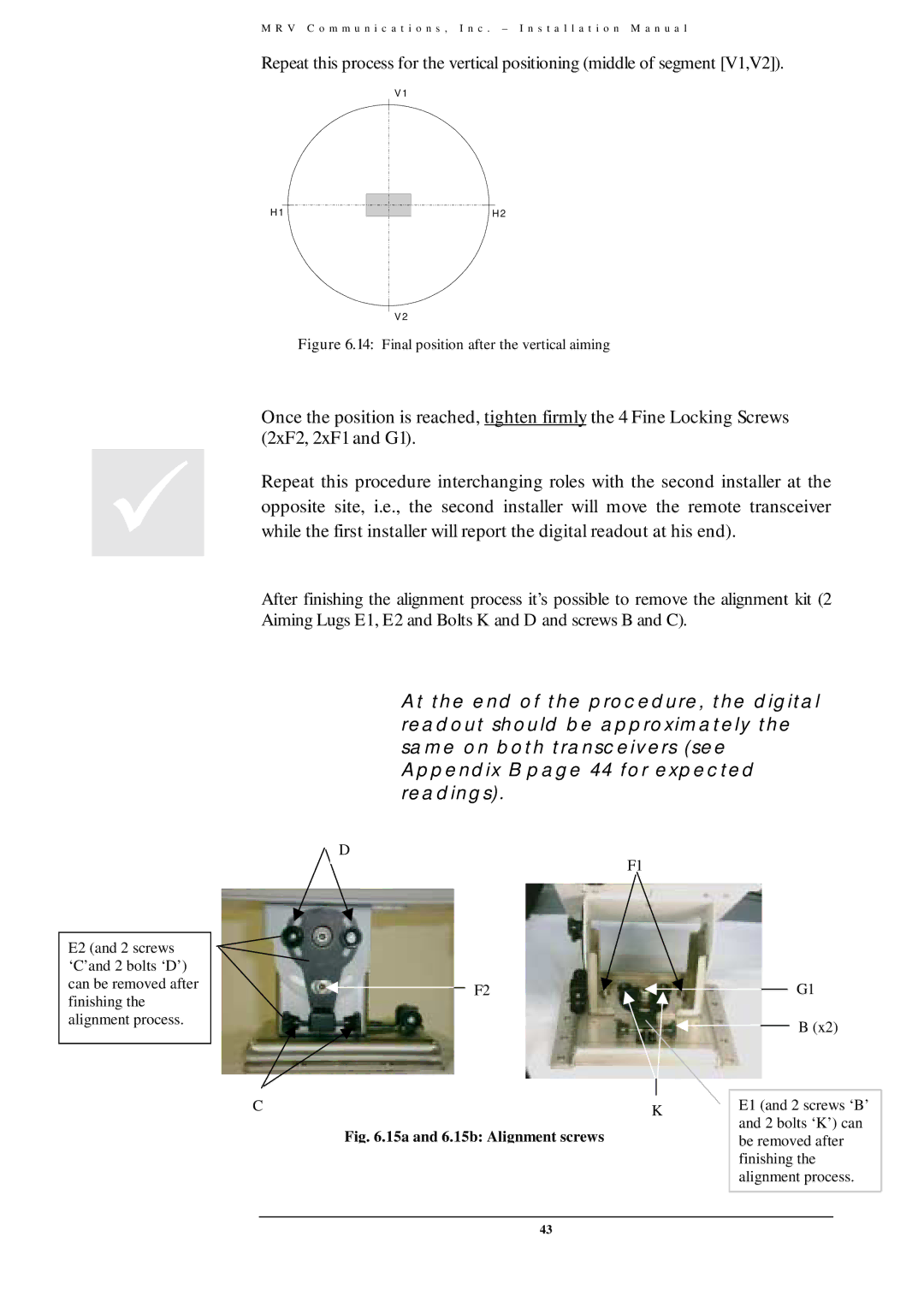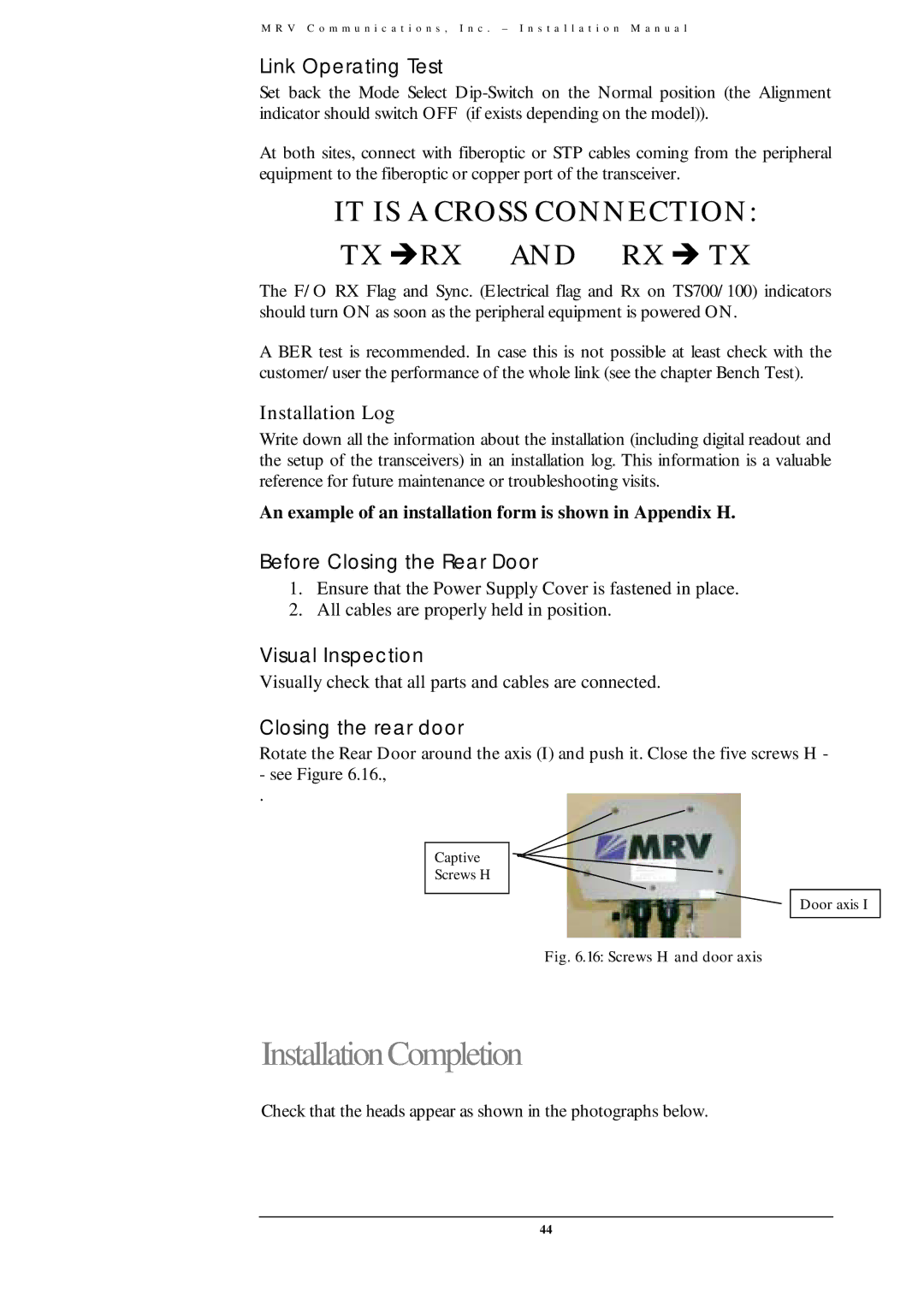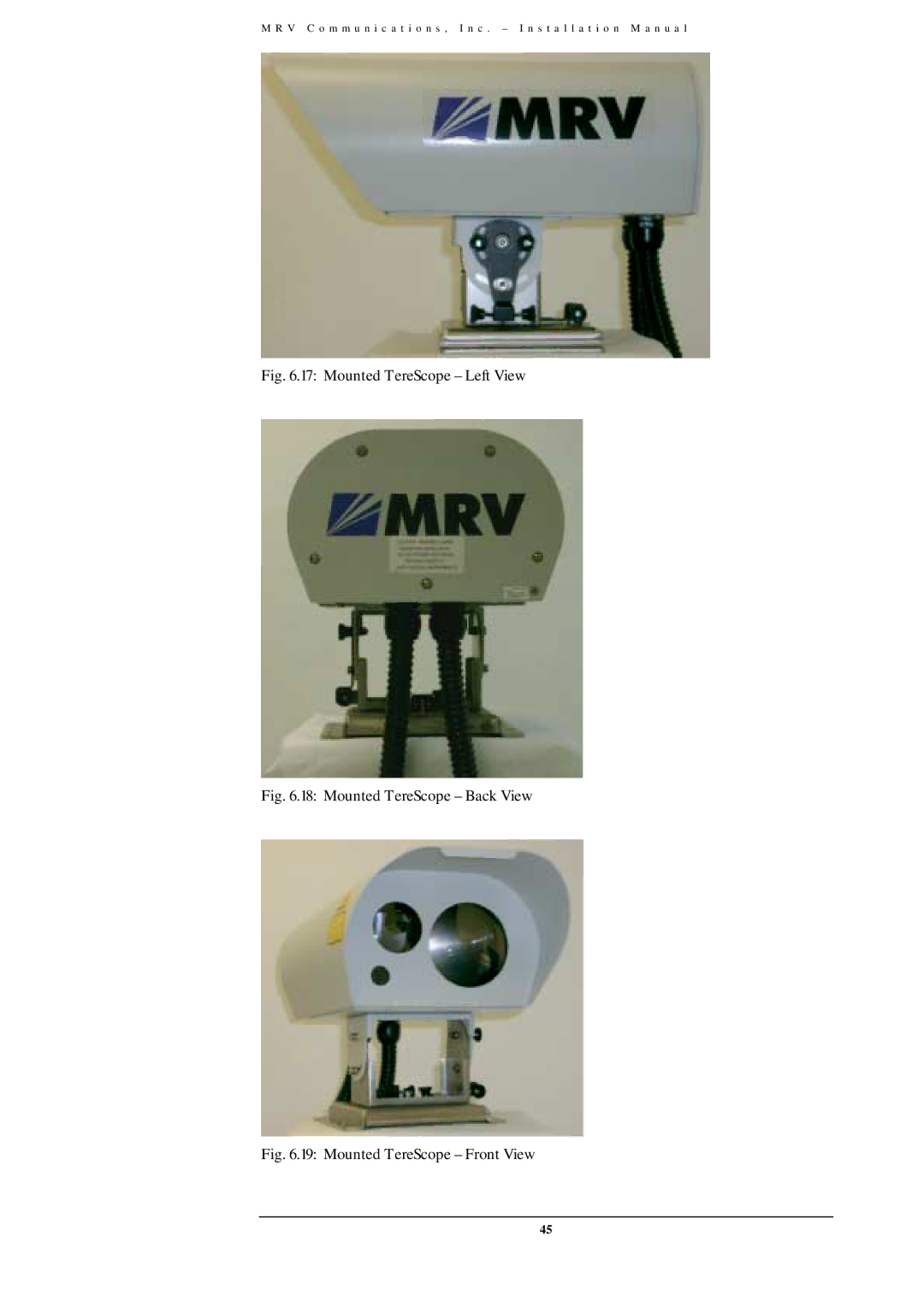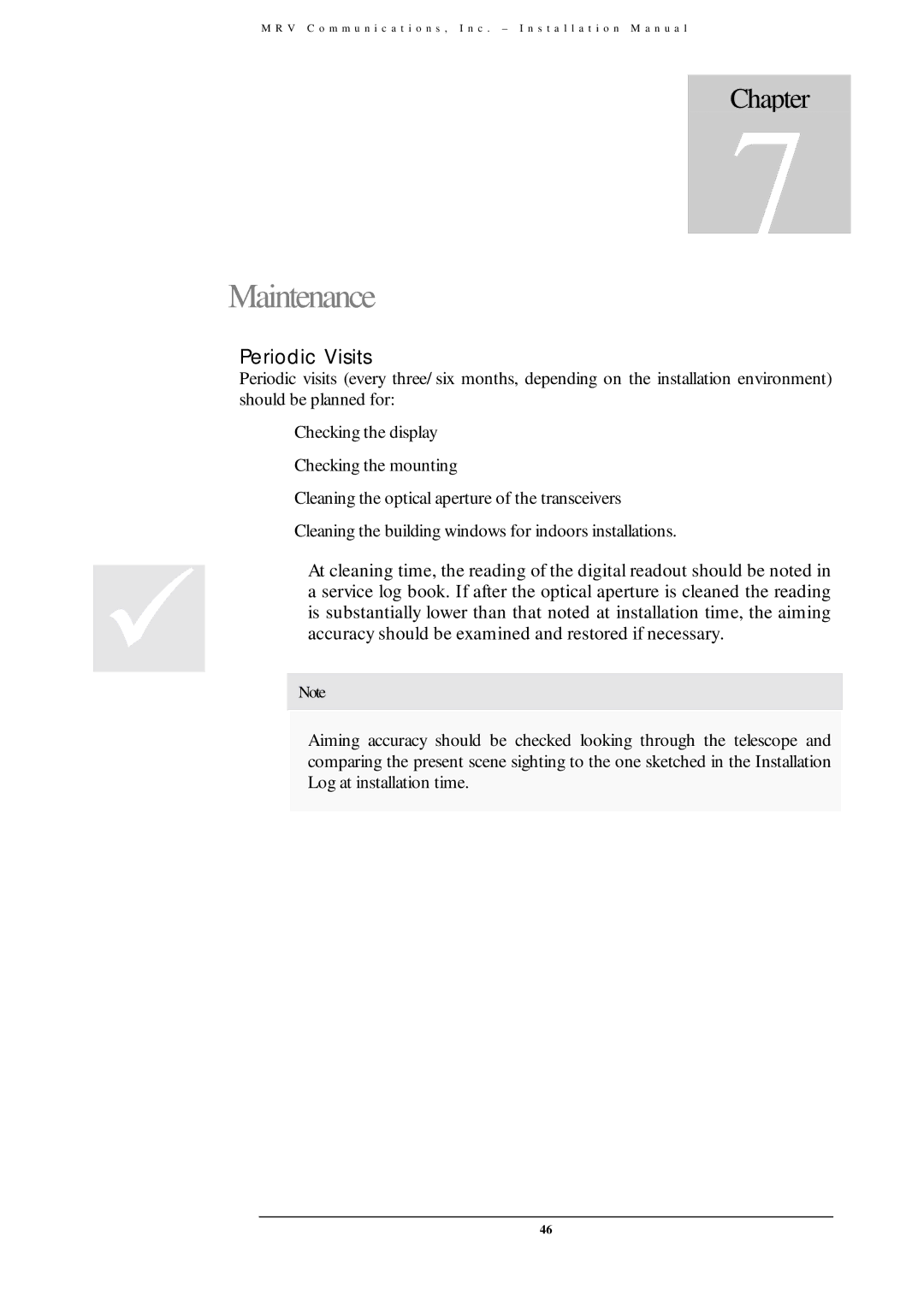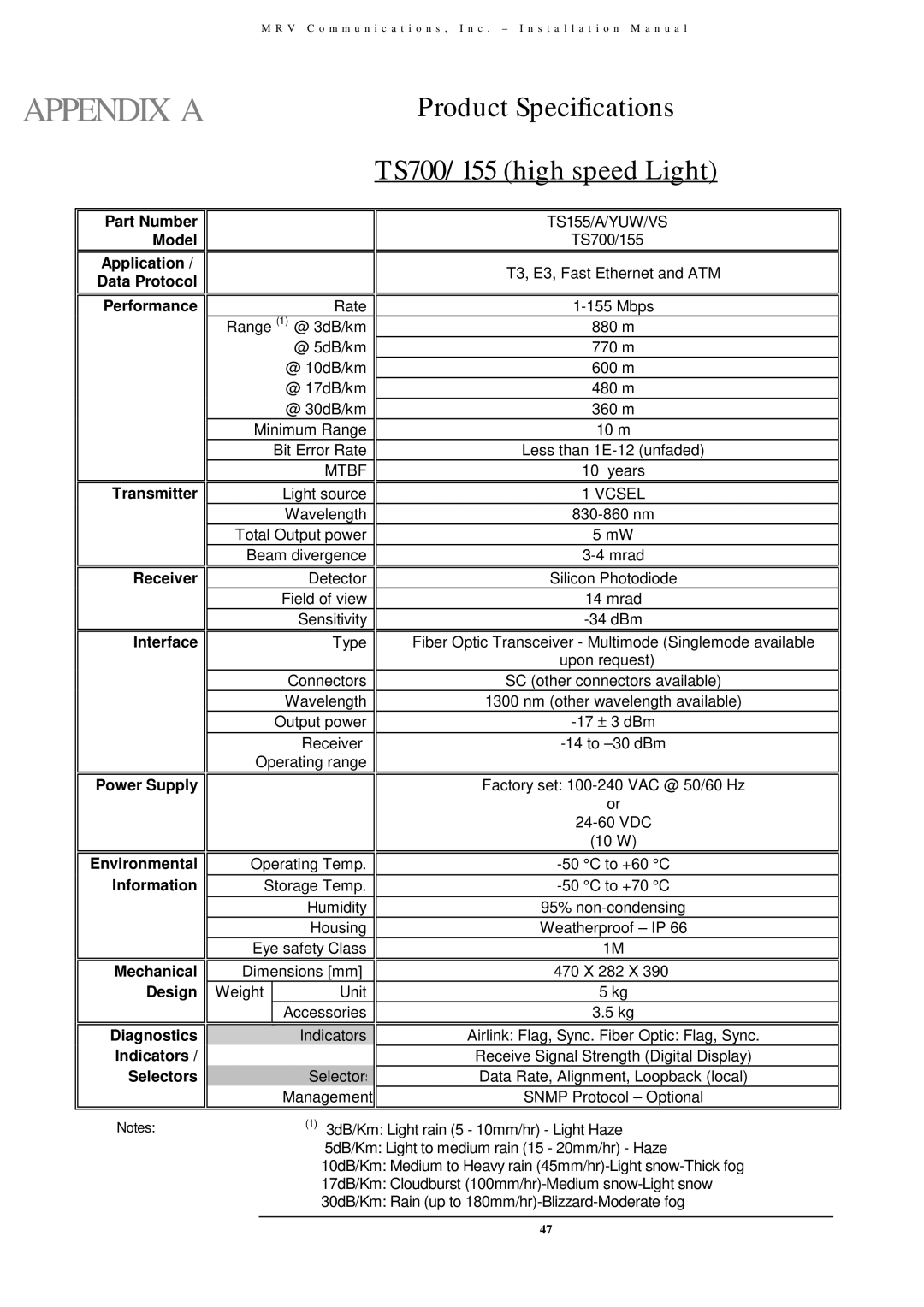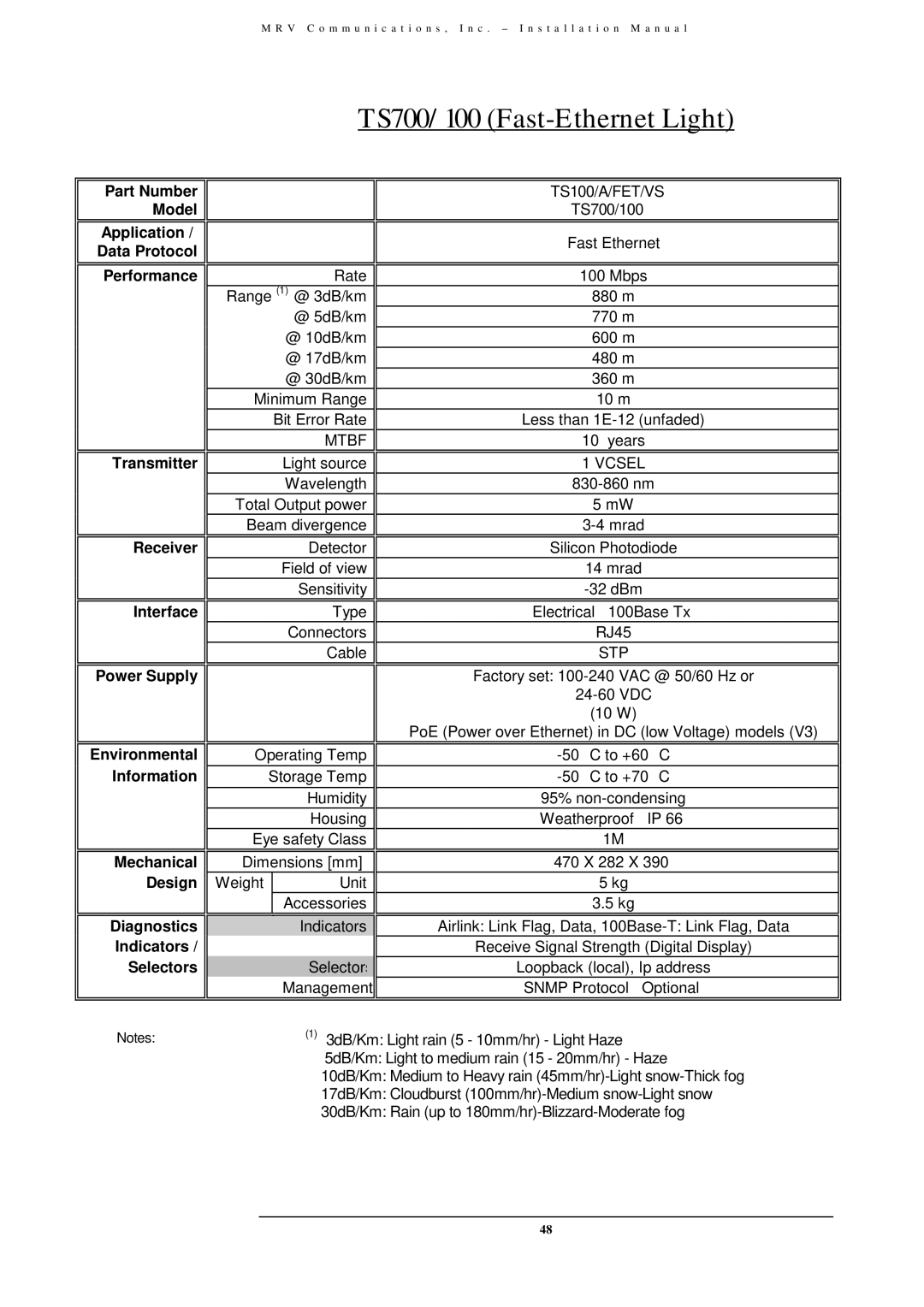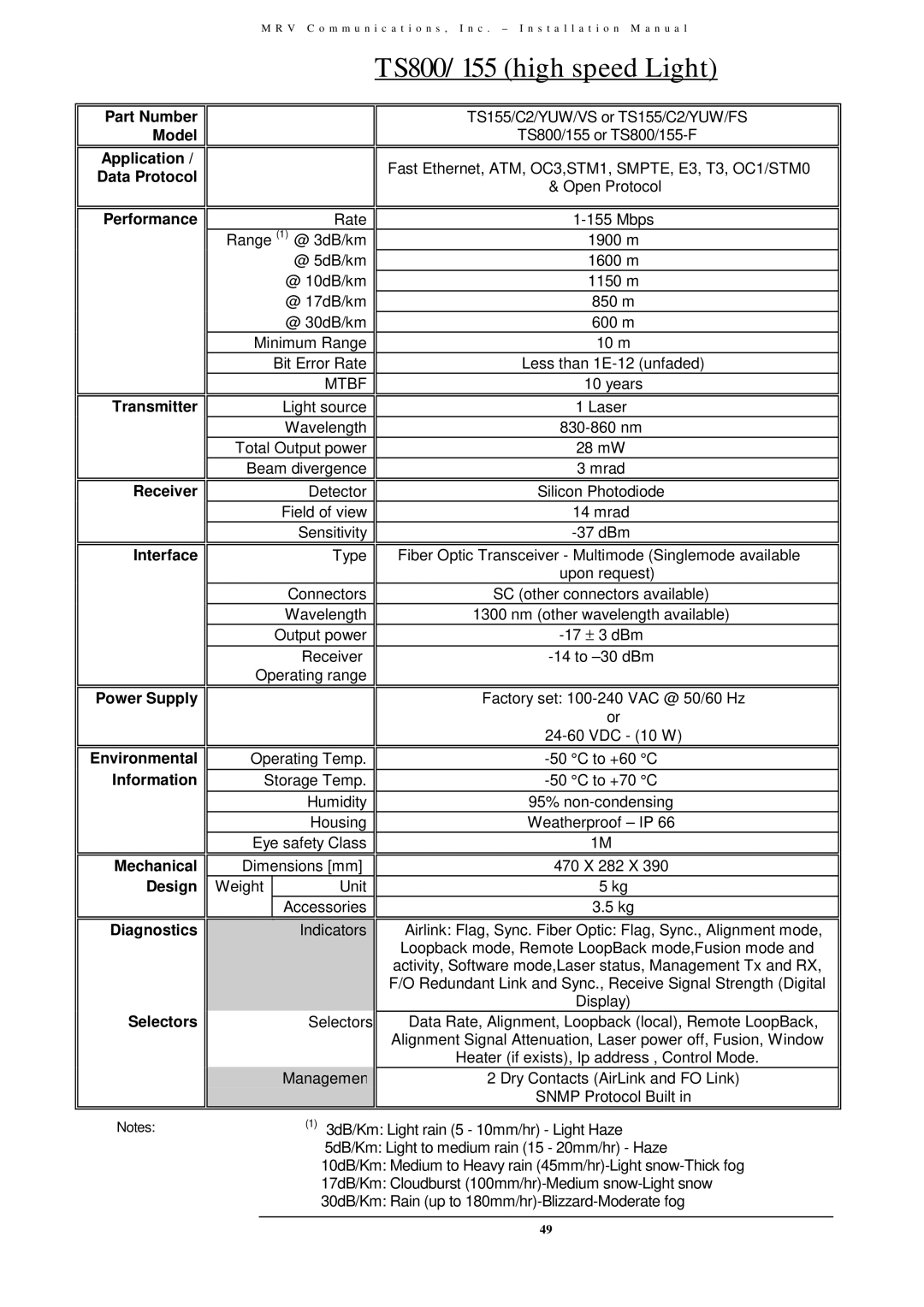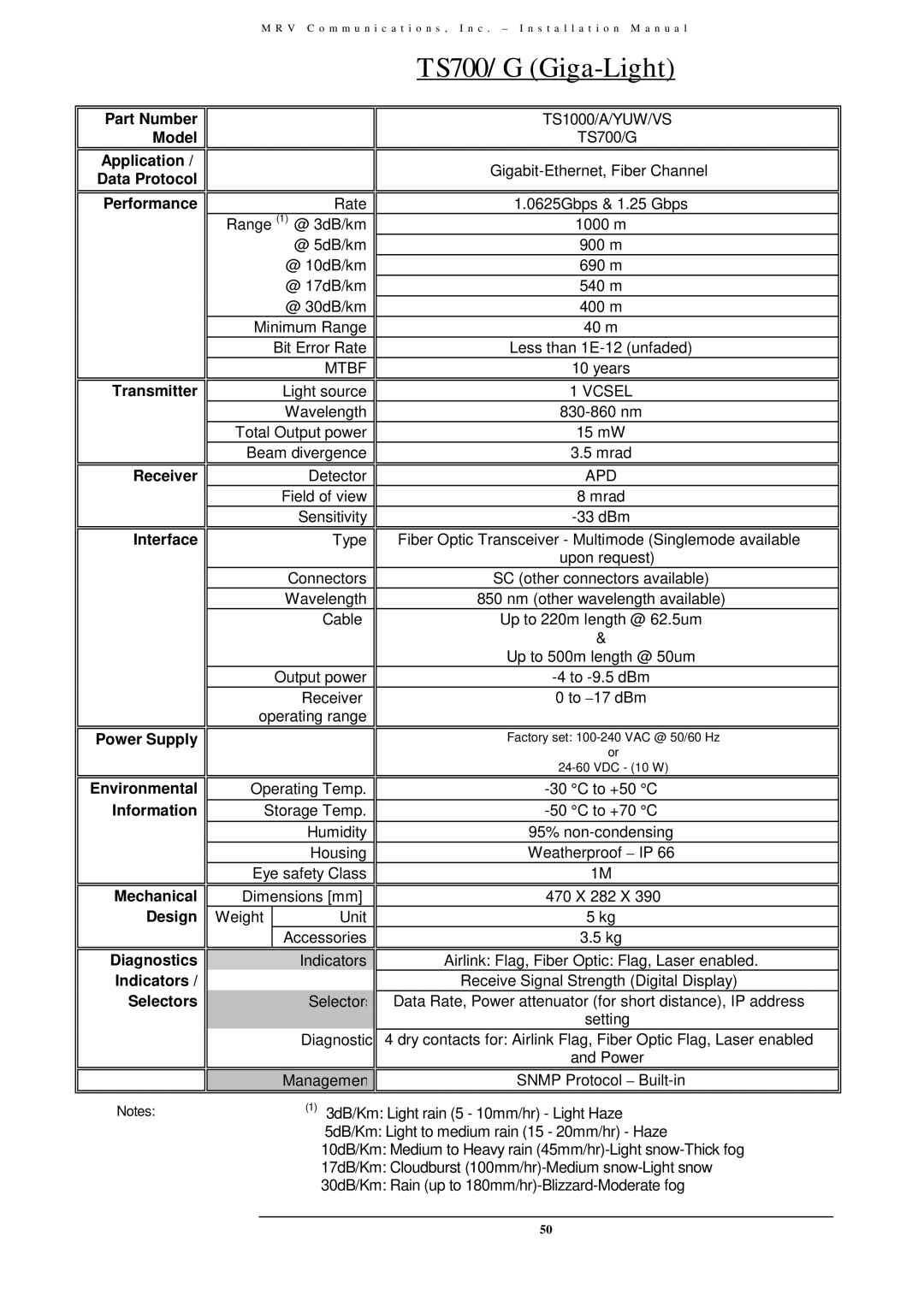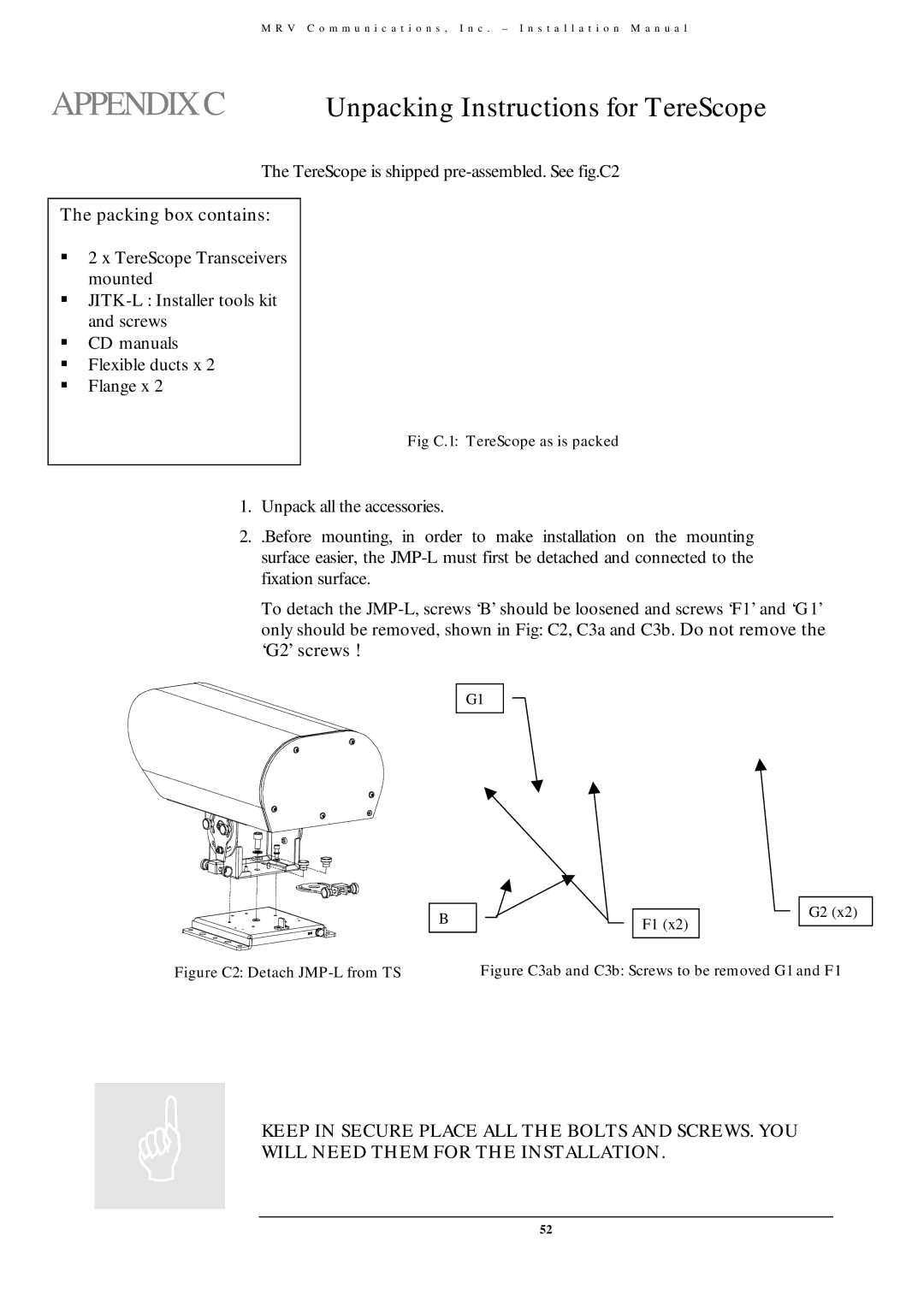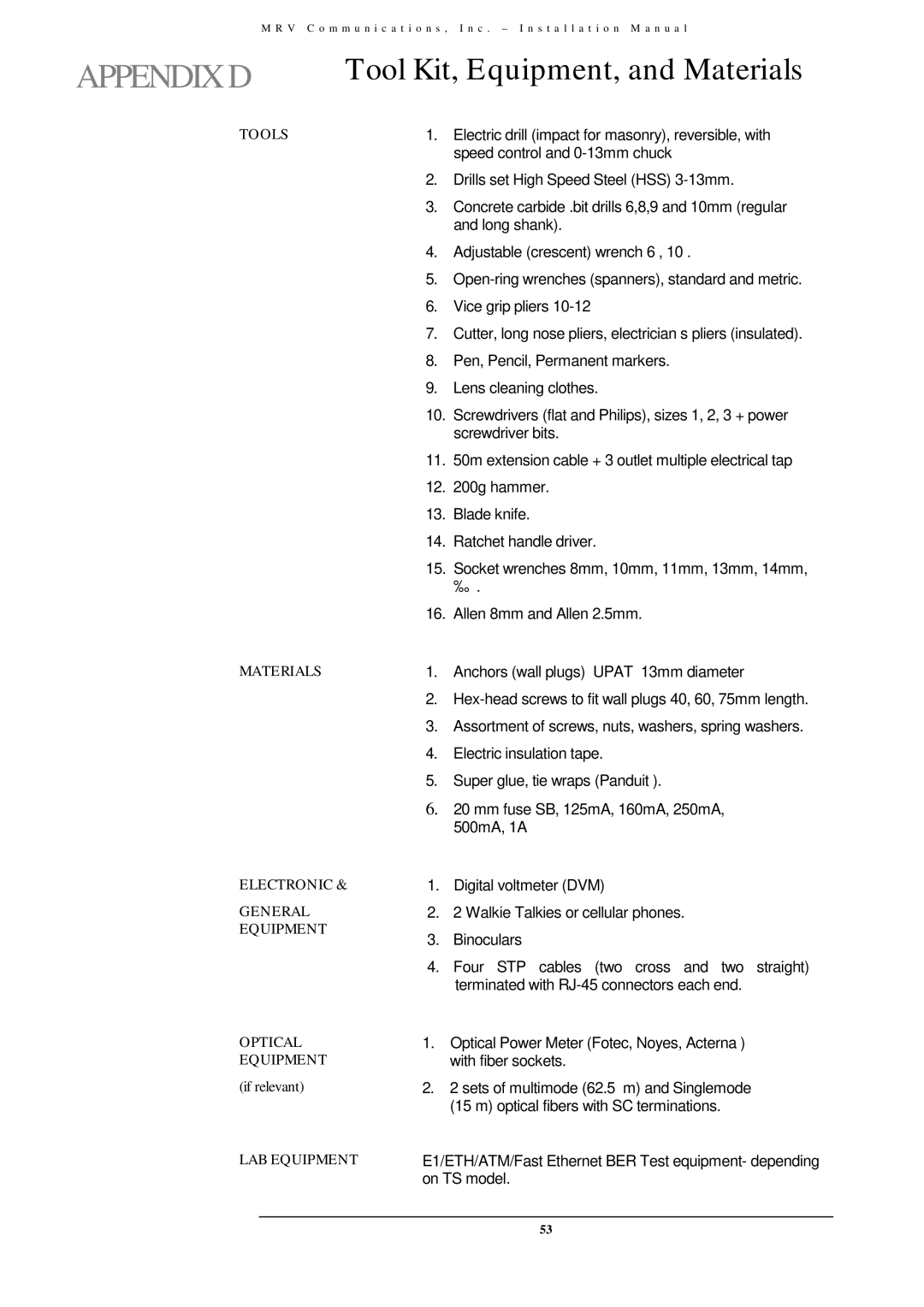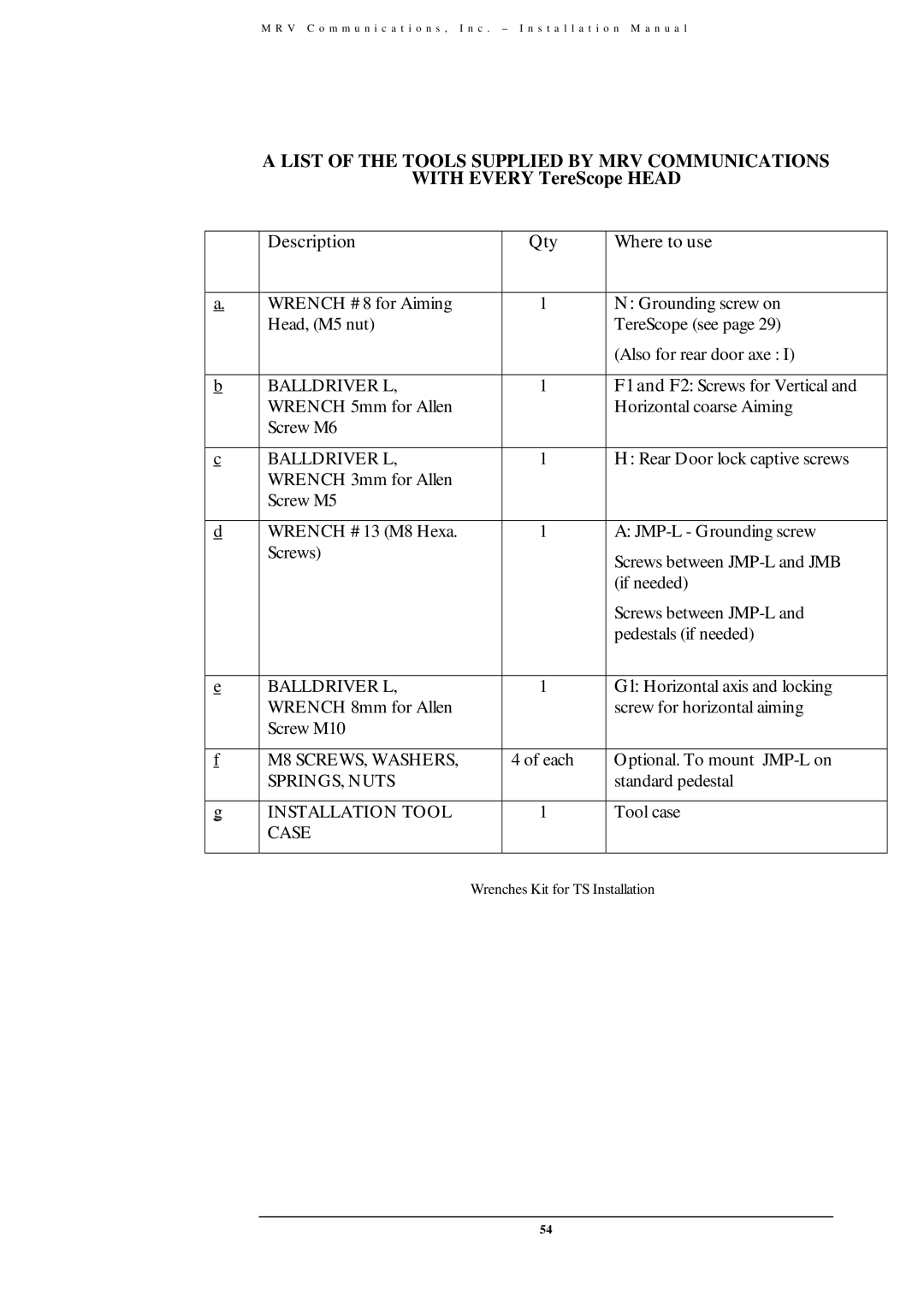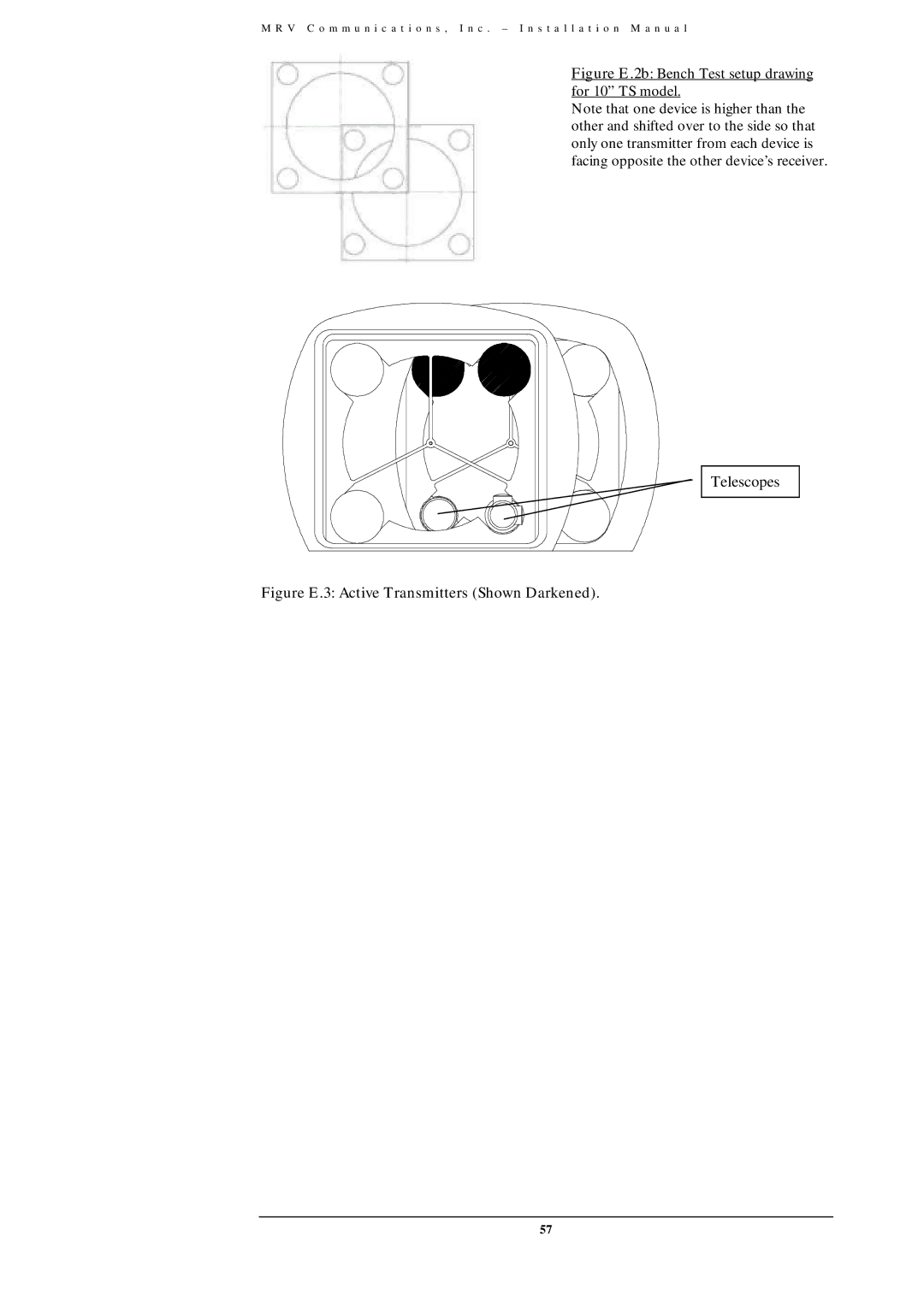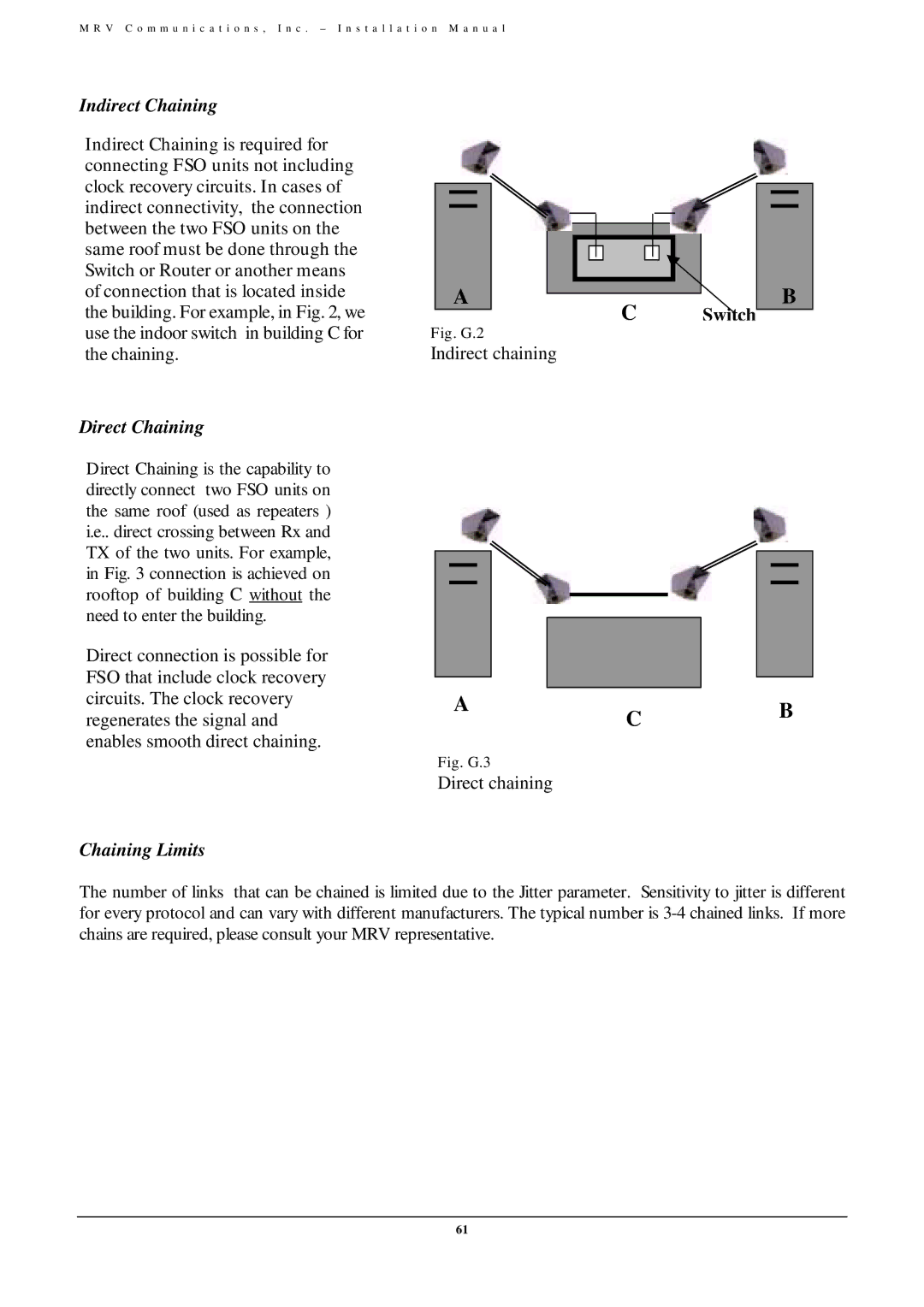
M R V C o m m u n i c a t i o n s , I n c . – I n s t a l l a t i o n M a n u a l
Chapter
6
AimingProcedure
Point to point connections requiretheorientationfacetofaceofboth“transceiving”ends of the link. Concerning wireless optical links, this should be done as accurately as possible in order to position the beam symmetricallyall around the remote receiver.
Powering on the TereScope
1 – Make sure that the power cable is disconnected from the electrical power source.
2 – Undo the five screws H
Captive |
|
Screws H | Door axis I |
4 – After connecting the power cables to corresponding sockets, tightly close the screws of the Terminal block –
see Figure 6.5. Gently jerk the cable to check that it stays connected. Cover the Terminal Block with a plastic cover (if available).
Fig. 6.4: Power cable & Terminal block Fig. 6.5: Power Terminal Block Locked
Fig. 6.1: Screws H and door axis
Back Door
Hole “O” |
|
|
and the |
| Door axis I |
opposite |
|
|
|
| |
screw | Fig. 6.2: Back Door Rotated ¼ of a turn | |
Door axis I
Fig. 6.3: View on Door axis
3 – Connect the wires of the power cable (see Figure 6.4) to the Terminal Block (see Figure 6.5) paying attention to L=Line, G=Ground & N=Neutral.
Power Cable
Fiberoptic Cable
Fig. 6.6: Power Cable and Fiberoptic Cable
Power Supply
Cover
Fig. 6.7: Power Supply Cover
5 – Cover the Terminal Block with the power supply cover. 6 – Rotate and push the Back Door up, and tighten
the five H screws.
7 – Connect the power cable to the electrical power source to power on the TereScope.
39
